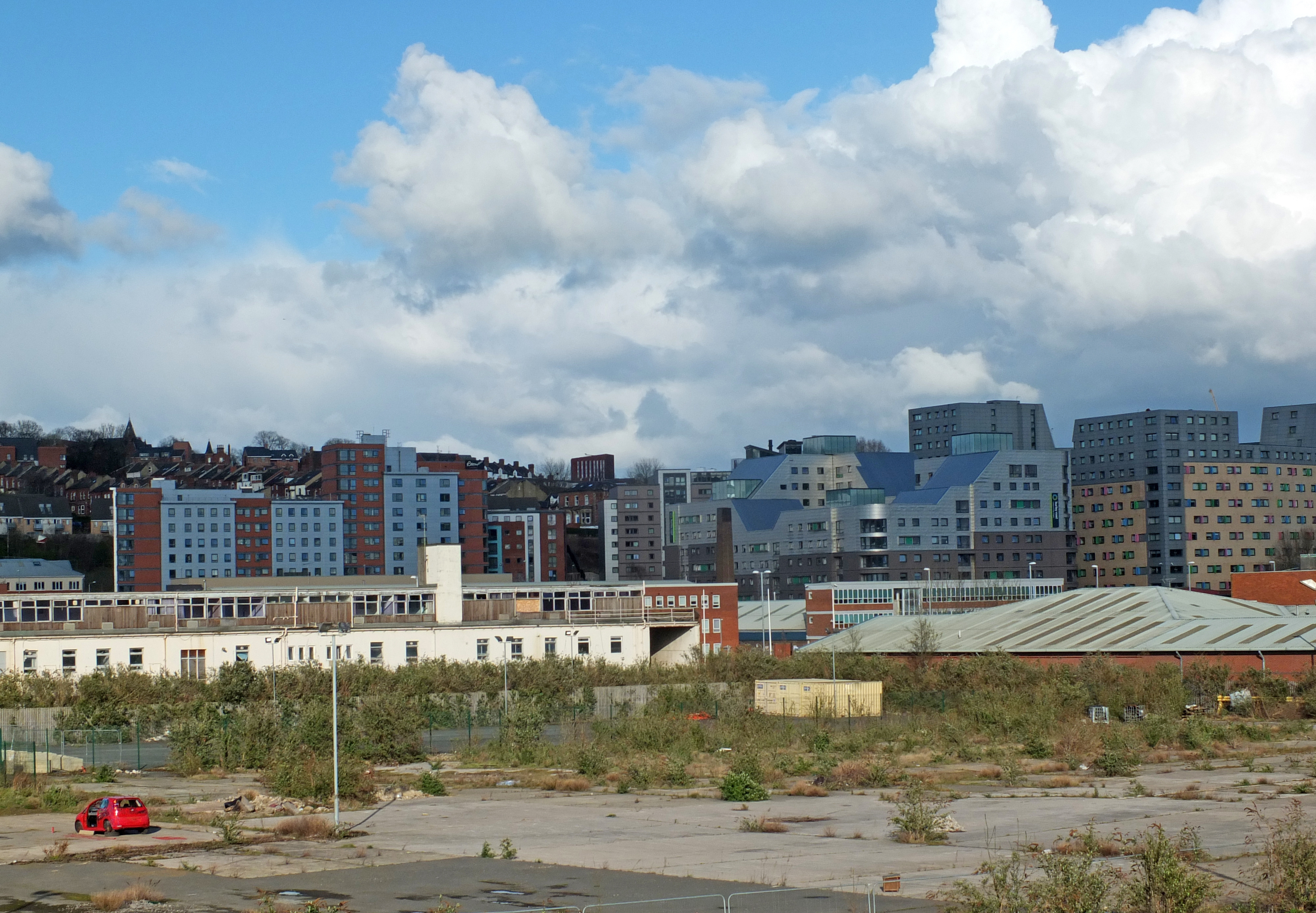Energy costs can contribute substantially to the overall financial burden of housing. Inefficient buildings—those with poor insulation, leaky windows, outdated HVAC equipment, and the like—are of particular concern, since they drive up utility costs more than their efficient peers.
When tenants pay the utility bills, energy efficiency improvements can reduce their vulnerability to energy price fluctuations, free up money for other uses, and improve their comfort and health. When utility costs are included in the rent, efficiency improvements can reduce overall operating and maintenance costs for the building owner and lower vacancy rates.
In short, greening a multifamily property is a smart move no matter which side of the transaction you’re on. But how do you go about it?
HAI Group’s Amy Hourigan sat down with Anthony Buonicore, P.E., QEP, director of engineering at Sustainable Real Estate Solutions, for advice. Mr. Buonicore has been a property due diligence professional in the commercial real estate market for 40 years; he’s responsible for the technical review of energy conservation measures and renewable energy systems for various statewide energy efficiency financing programs. A past president and Fellow of the Air & Waste Management Association, Buonicore chairs the National ASTM Building Energy Performance Assessment Task Group and is co-chair of the Performance Measurement and Benchmarking Sub-Group of the Zero Energy Commercial Buildings Consortium.
Amy Hourigan: Thank you for taking the time to talk with us. First things first, why is energy efficiency so important, particularly in multifamily?
AB: Energy cost represents one of the largest operating costs at multifamily properties. A growing body of research suggests that more than 25% of this energy is wasted through inefficiencies that can be corrected. Reducing energy costs by making energy efficiency upgrades will improve affordability for residents and reduce operating costs for owners.
AH: If your building is under a certain age, are you in the clear?
AB: If the building was recently constructed, it had to comply with the current building energy code in the area in which it is located, which today often requires energy efficient design, although not necessarily the most energy efficient design. Notwithstanding, from my experience it is highly unlikely today that a newly constructed multifamily property will consider costly energy efficiency improvements within the first ten years after construction. If the property is less than ten years old, making a financial case for an energy efficiency upgrade to an owner would be difficult.

AH: What is the biggest barrier you have encountered in making energy efficiency improvements?
AB: The ‘split incentive’ issue, where the owner is being asked to pay for energy efficiency upgrades that benefit the tenant. With many multifamily properties having leases where the tenant pays for electricity, there is little incentive for the owner to make an energy efficiency upgrade that can reduce electricity use. Of course, the owner, in this case, would be ignoring the marketability advantage of having lower energy costs for tenants. Other barriers I have seen include fear that the projected energy savings will not materialize, difficulty in obtaining financing, and privacy issues in obtaining tenant energy use information.
AH: Benchmarking a building’s performance seems like a logical first step in an energy makeover. How do you go about it? Are there certain standards to follow?
AB: The most important first step is obtaining the baseline annual energy consumption. Keep in mind it must be a representative year and must not include a period where major renovations or upgrades might have been made. Then, the annual energy consumption must be normalized to reflect weather differences if the year was particularly cold or warm compared to averages. The end result is the property’s energy use intensity (in units of kBtu/ft2-yr). This can then be benchmarked using EPA Energy Star. The benchmarking will show how the building compares to its peers. An ASTM standard, E2797-15, addresses the collection of representative building energy use data, and EPA Energy Star’s website discusses appropriate data entry for benchmarking analysis.
AH: Are there reporting requirements or future statewide regulations to consider when benchmarking a building?
AB: Dozens of states, cities, and even a few counties have passed building disclosure legislation requiring properties that meet certain criteria to disclose their energy use each year. Often, the building’s energy use is made public. The goal of such legislation is straightforward: reward high-performing buildings and penalize those that underperform. Interestingly, Fannie Mae and Freddie Mac developed programs that focus on multifamily building energy performance. Fannie Mae, for example, specifically includes the assessment of building energy performance in its Green Rewards program.
AH: After benchmarking, what’s next?
AB: Building energy consumption data is often collected by an energy professional as part of a building energy audit, which includes a walk-through survey of the property and its benchmarking. As part of this effort, the auditor will identify and recommend potential energy conservation measures. Energy cost savings will be projected and a cost estimate provided, along with an economic analysis that includes payback time, cash flow impact projections, IRR, ROI, and a net present value assessment.
AH: What type of credentials should an energy auditor have?
AB: They should have at least five years of experience and have credentials that might include a professional engineering (PE) or architecture (RA) designation, an ASHRAE Building Energy Assessment (BEAP) Professional Certification, an Association of Energy Engineers’ Certified Energy Manager (CEM) or Certified Energy Auditor (CEA), or an equivalent designation.
AH: Is it better to approach the project from a whole building perspective, or should you replace outdated systems first?
AB: It is certainly better to approach a project from a whole building perspective, particularly because of potential interactivity between measures as they are installed. For example, an LED lighting upgrade will not only reduce lighting electricity use, but also reduce air conditioning load in the summer months (because LED lighting puts out less heat that must be removed) and increase space heating load in the winter months.

AH: Which energy efficiency improvements typically have the most impact?
AB: In my experience that’s LED lighting upgrades, air sealing, and insulation, high-efficiency air conditioning or heat pumps, high-efficiency domestic hot water heaters, low-E windows, and condensing boilers or furnaces.
AH: What about appliances such as washers, dryers, and refrigerators? How much of a role do they play in energy performance?
AB: Appliances can and do play a role in reducing energy consumption. The clear trend is to use Energy Star-labeled appliances.
AH: Some multifamily property owners have created energy efficiency turnover protocols whereby they make upgrades to vacated units. Is this a good idea?
AB: Yes. I have seen protocols that when equipment replacement is needed it must be done with high-efficiency devices that have an Energy Star label. Also, when the unit is vacant, it’s an opportune time to make improvements that could have been disruptive to a tenant.
AH: Are building controls important?
AB: The most common building control for tenant units is a smart thermostat. It can save 10 percent on heating costs and 15 percent on cooling costs.
AH: Thoughts on green roofs…are they worth the investment?
AB: While green roofs may be competitive when social benefits are included, they are not high on the list of competitive commercially attractive energy conservation techniques I would consider in an energy efficiency improvement project. Moreover, for existing buildings, particularly older buildings, green roof design requires structural engineering analysis and support, which further increases cost.

AH: Are solar photovoltaic systems a good investment for multifamily property owners?
AB: When you consider the incentives for solar PV systems, including the investment tax credit and renewable energy credits from utilities, the energy savings over their useful life of approximately 25 years can make the investment worthwhile. However, for roof-top units, if the building roof also needs to be replaced because its remaining useful life is less than the solar PV system’s useful life, or the building’s structural support needs to be upgraded to support the solar system under worst-case loadings, it reduces the attractiveness of the investment. Also, I would not evaluate a solar system’s economics until the impact of other energy efficiency measures have been taken into consideration. For example, if electricity use will be reduced considerably by other measures such as LED lighting or high-efficiency air conditioning, this will reduce the size of the solar system and the amount of electricity produced, and therefore impact the project economics. Investing in a solar PV system requires many things to be taken into consideration before you can conclude whether it’s a good financial investment.
AH: What about CHP systems?
AB: Like solar PV systems, combined heat and power systems, also known as cogeneration, require careful evaluation to determine whether the investment is worthwhile. Key considerations include productive use of the waste heat produced and the cost, in dollars per operating hour, of a full-service maintenance contract to replace parts as they wear out.
AH: What types of programs or assistance do utilities typically offer?
AB: Depending on the utility that serves the property, many levels of utility assistance may be available. For example, many utilities offer energy assessments, rebates on Energy Star appliances, electronics and equipment, and below-market financing. There may be renewable energy credits and grants for renewable energy systems. These should be investigated as part of an energy efficiency improvement project.
AH: Anything else multifamily owners should know about going green?
AB: I would add that while we’ve been focusing on energy efficiency, it also makes sense to focus on efficiently using water, including the use of low-flow faucets, dishwashers, washing machines, toilets, and showerheads. EPA’s WaterSense program is a good place to start.
AH: Thank you, Anthony. Readers should note that their insurance company may offer products that help offset a multifamily property owner’s expense to go green if the building suffers a loss or damage caused by a covered peril. For example, if your roof, interior lighting, or HVAC equipment is damaged in a fire, certain policies can be structured to pay the extra cost needed to upgrade to green products. It’s a good idea to talk to your agent or carrier representative about available options.
Contact our Risk Control and Consulting team for answers to your housing organization's risk-related questions.
Interested in working with HAI Group? Our Account Services team is ready to assist you.
Includes copyrighted material from a company under the HAI Group family, with its permission. This post is for informational purposes only and is not intended to provide legal advice, and shall not be relied on as such. We strongly recommend consulting with legal counsel or an appropriate subject matter expert.








